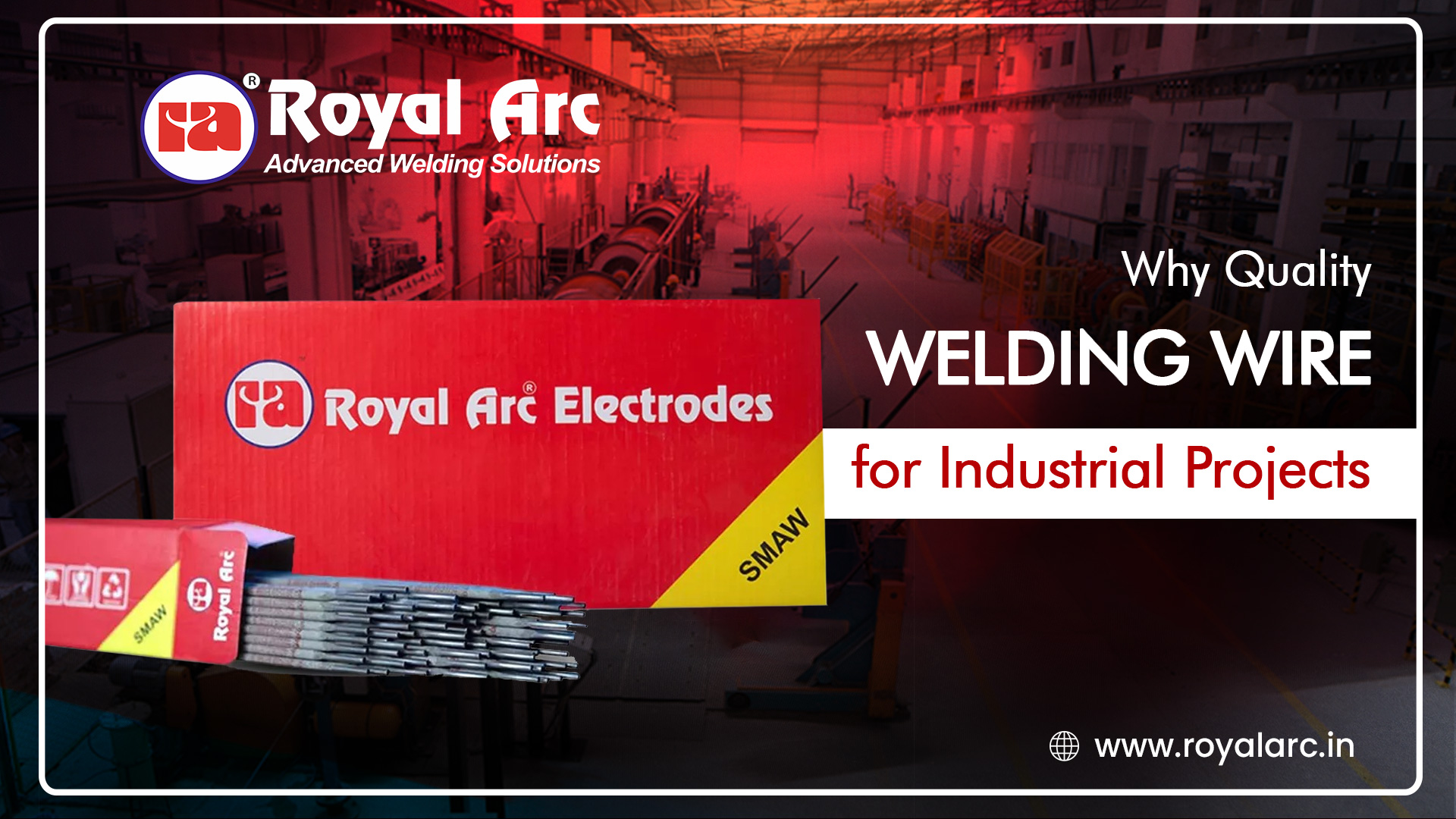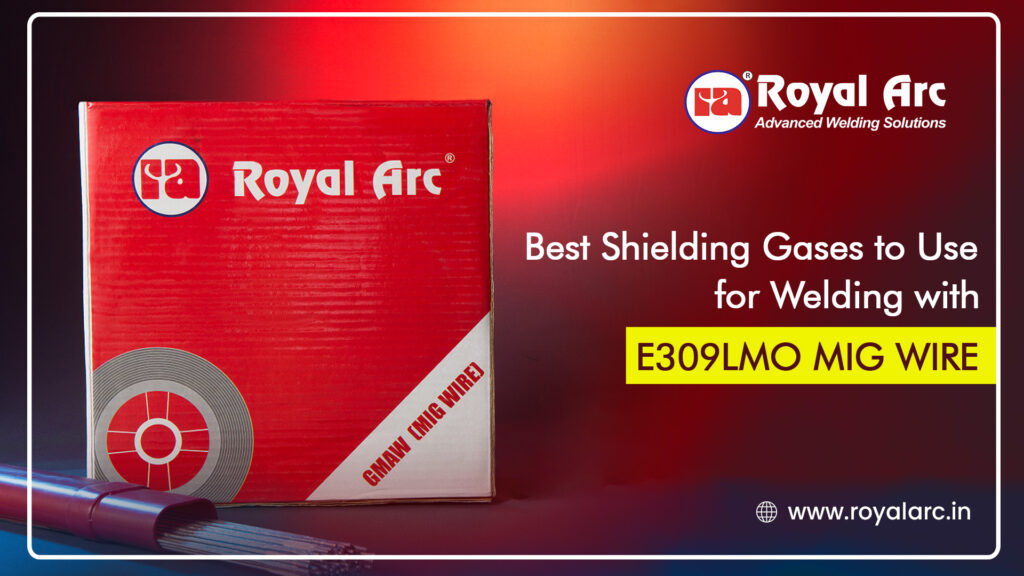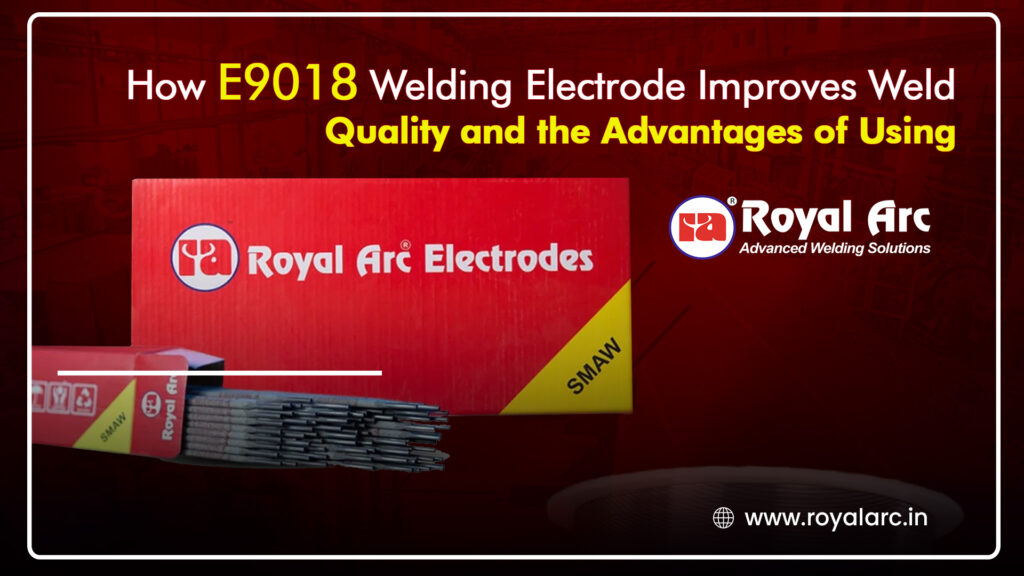Welding, the process of joining two metals, is the backbone of industrial structures, ensuring their durability and production. Every industrial project, from infrastructure to energy, relies on the quality of welding. This quality is determined by the welding wire. If the wire’s quality is compromised, the entire structure’s strength is at risk. Therefore, understanding the significance of high-quality welding wire and why brands like Royal Arc should be trusted is crucial. Let’s delve into the main topic:
What is Welding Wire and its Role?
Welding wire, a form of metal used to join the main metals during welding, plays a crucial role in creating durable joints. When an electric arc is formed, this wire melts and acts as a filler metal between the two metals, ensuring the strength and longevity of your project.
Types of Welding Wire
Solid Wire (for MIG Welding)
The machine feeds the solid wire used in MIG welding from a continuous spool. This wire is usually used in shielding with CO₂ or Argon gas and is mainly used on carbon steel, mild steel, and SS materials.
Flux Cored Wire (FCAW)
This wire is filled with flux inside, which reduces the requirement for shielding gas. Flux Cored Wire performs well even in the presence of air. That’s why it’s especially useful for outdoor welding. Flux-cored wire is used in structural steel, shipbuilding and piping.
SMAW – Shielded Metal Arc Welding (Stick Electrode)
SMAW uses a coated electrode, which is manually fed. In this, you do not need a gas shield. This wire is suitable for rough work, repair work and remote locations.
TIG Filler (Tungsten Inert Gas) Wire
This wire used in TIG welding is manually fed. It is required when you need finish, precision and accuracy of paramount importance. This wire is suitable for medical, aerospace and decorative work.
What are the Needs of Industrial Projects?
In industrial projects, welding is not enough to just join two metals. Required :
To provide the project with high-quality joints that last a long time.
- Speed of production and adherence to deadlines.
- X-ray quality welds that can pass every test.
- Less fume and spatter for a safer working environment.
- Multi-position welding capability to achieve precise welds at different angles.
All these benefits are only possible when the welding wire is of high quality, with a controlled composition and precise manufacturing. This knowledge empowers you to make informed decisions about the welding wire you choose for your projects, ensuring the best results.
Features of High Quality Welding Wire
Uniform Diameter
A wire with uniform diameter creates a stable arc and maintains continuity in welding. This enhances both the beauty and strength of the weld.
Low Spatter and Fumes
High-quality wire generates less spatter and fumes during welding, significantly reducing cleaning needs and safeguarding the health of the worker. This safety feature is a significant advantage of using high-quality welding wire, providing a secure and healthy working environment.
Excellent Flux Composition (in Flux Cored Wire)
The quality of the flux in flux-cored wire is of utmost importance. Excellent flux composition ensures better arc stability, clean slag and deep penetration.
X-ray Quality Welds
Joints made from High Quality Welding Wire are so perfect that they pass X-ray and Ultrasonic Tests, such as NDT (Non-destructive Testing).
Capable of Multi-Position Welding
Good wire is capable of welding easily in different positions (up, down, horizontal, vertical), allowing it to be used in every type of structure.
Disadvantages of Low Quality Wire
Poor quality welding wire can lead to problems such as arc instability, excessive spatter, porosity, poor slag removal, weak joints, and failed X-ray tests. This increases your rework costs and wastes time. Welds made with poor-quality welding wire can crack in the future, posing a serious threat to safety and durability.
Impact of Quality in MIG Welding and Flux Cored Wire
Both MIG and FCAW processes are chosen for high speed and production. If the quality of welding wire in both of these is not good, then the arc breaks frequently. This results in inconsistent welding and reduces the machine’s performance.
At the same time, when the quality of Flux cored wire is poor, the slag does not get removed, the flux does not burn, and the wire starts breaking from the inside. In MIG welding, low-quality solid wire produces more spatter and less deposition.
Royal Arc’s high-quality MIG and Flux Cored Wires provide a solution to this problem and ensure long-term reliability.
Why is Royal Arc the Best?
- ISO 9001:2015, AWS and CE Certified Products:
- Royal Arc’s welding wires come with all the recognised quality certifications.
- X-ray Quality Welds: Welds made with Royal Arc wire easily pass Non-Destructive Testing (NDT) such as X-ray and Ultrasonic Testing.
- Low Spatter and Fume Generation: Royal Arc wires provide a clean welding experience with minimal spatter and fumes, which is better for both safety and cleanliness.
- Technical Support: Royal Arc offers products, technical support, worker training and welding advice.
- Made in India: Royal Arc is manufactured in India, but its quality and reliability are respected in international markets as well.
Conclusion
In today’s competitive and safety-critical industry, having quality welding wire is important because a bad wire can slow down your project and jeopardise the safety of the entire structure. So, no matter what the scale of your project, Royal Arc’s high-quality Welding Wire should be your first choice. Better control, better arc, better weld, that’s the hallmark of Royal Arc.




